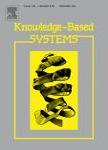版权所有:内蒙古大学图书馆 技术提供:维普资讯• 智图
内蒙古自治区呼和浩特市赛罕区大学西街235号 邮编: 010021

作者机构:Univ Toronto RiskLab Toronto ON M5S 3G3 Canada N China Elect Power Univ Sch Business & Adm Beijing 102206 Peoples R China Univ Waterloo Waterloo ON N2L 3G1 Canada Reykjavik Univ Menntavegur 1 IS-101 Reykjavik Iceland
出 版 物:《KNOWLEDGE-BASED SYSTEMS》 (知识库系统)
年 卷 期:2011年第24卷第3期
页 面:378-385页
核心收录:
学科分类:08[工学] 0812[工学-计算机科学与技术(可授工学、理学学位)]
主 题:Artificial fish swarm algorithm Radial basis function neural network K-means clustering algorithm Data mining Shanghai Stock Exchange Index
摘 要:Stock index forecasting is a hot issue in the financial arena. As the movements of stock indices are non-linear and subject to many internal and external factors, they pose a great challenge to researchers who try to predict them. In this paper, we select a radial basis function neural network (RBFNN) to train data and forecast the stock indices of the Shanghai Stock Exchange. We introduce the artificial fish swarm algorithm (AFSA) to optimize RBF. To increase forecasting efficiency, a K-means clustering algorithm is optimized by AFSA in the learning process of RBF. To verify the usefulness of our algorithm, we compared the forecasting results of RBF optimized by AFSA, genetic algorithms (GA) and particle swarm optimization (PSO), as well as forecasting results of ARIMA. BP and support vector machine (SVM). Our experiment indicates that RBF optimized by AFSA is an easy-to-use algorithm with considerable accuracy. Of all the combinations we tried in this paper, BIAS6 + MA5 + ASY4 was the optimum group with the least errors. (C) 2010 Elsevier B.V. All rights reserved.